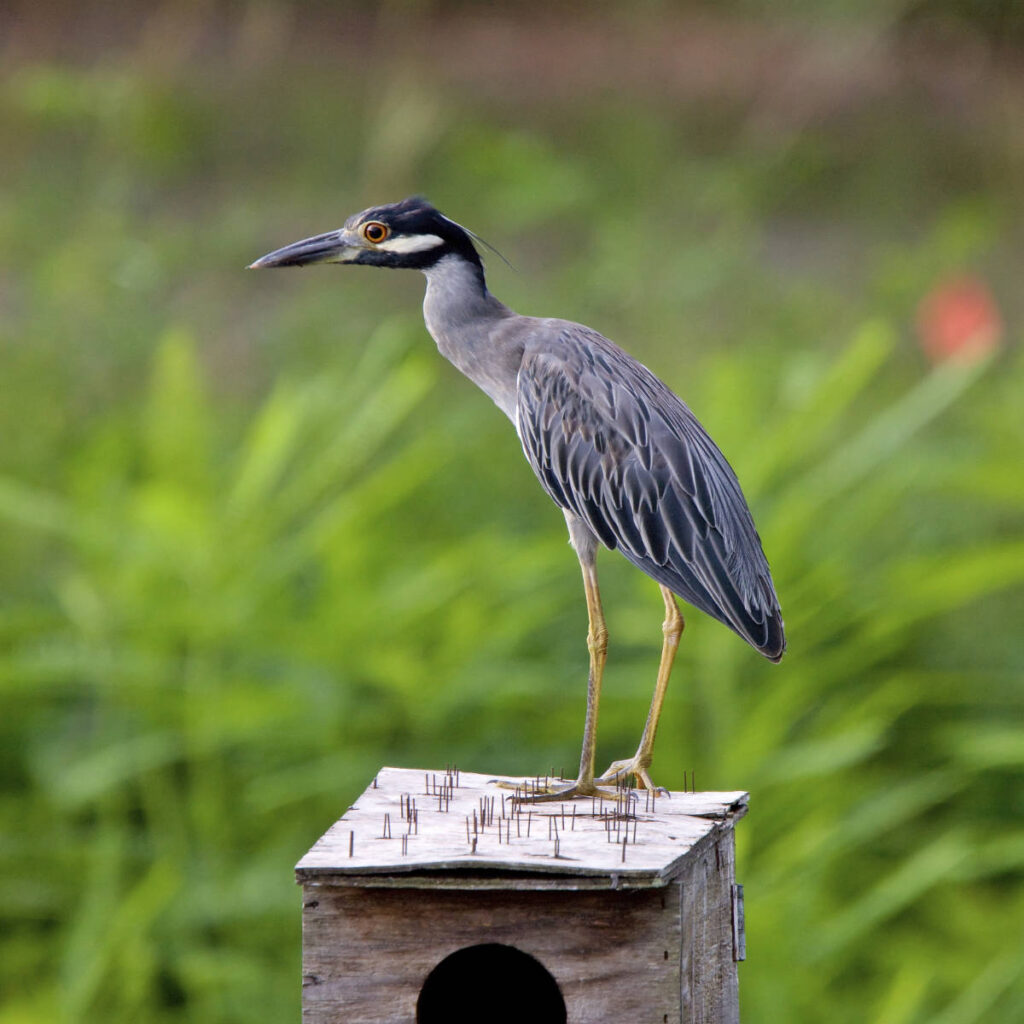Last Reviewed and Updated on July 24, 2022
Herons are interesting birds that will impress you with their impressive and cunning hunting skills. Read on to learn some of the facts about herons you might not yet know.

1. Herons fly with their necks retracted
These birds resemble storks, cranes, ibises, and spoonbills, but a notable difference between herons and those species is the way they fly. Herons have their necks retracted when they fly, while other similar-looking species of birds have their necks outstretched.
2. Goliath heron is the largest. Dwarf and little bittern are one of the smallest heron species
The largest species of heron is the Goliath heron (Ardea goliath). They can reach heights of up to 5 ft / 152 cm tall with an impressive wingspan of up to about 7 ft 7 in / 230 cm.
The dwarf bittern (Ixobrychus sturmii) and the little bittern (Ixobrychus minutes), on the other hand, are the smallest known heron species. These birds have a length of up to 15 inches (38 cm) and a wing span up to about 23 inches / 58 cm.
3. They can make an S shape with their necks
Herons are able to make an S shape with their necks as they have a modified shape of the neck bones. They have 20 or 21 neck bones.
4. Most species eat aquatic animals
Fish, crab, shrimp, krill, mollusks, and aquatic insects are often on their menu. They also eat reptiles and amphibians. A lot of species will also opportunistically take on larger prey, such as other birds, eggs, and rodents. They may also eat carrion, although they eat it only on rare occasions.
Some species eat it all, while some are specialized and eat only one or a few types of animals.
5. They mostly hunt by motionlessly waiting for their prey to come close and then spear it
Herons most commonly hunt by waiting motionlessly in shallow waters or on the edge of the water and wait for the prey to come within range, and when it does, the heron moves its head side to side to assess the position of the prey and then the heron spears the prey with its bill.
They may also walk around slowly, snatching up their prey as they go.
6. Little egret, striated heron, and grey heron have been seen using bait to lure their prey
This is one of the most interesting facts about herons. To make their hunting techniques even more impressive, a couple of species have been observed using bait to catch their prey. A heron will either use an item that is already in water or will add its own to attract the fish. They use a variety of items, from leaves, trash, seeds, bread, insects, or flowers. Crafty little birds.
Impressed by this? You are going to love our list of weirdest animal facts.
7. A black heron creates a shade with its wings to hunt
Another impressive hunting tactic. A black heron uses its wing to form a canopy when it is fishing. This umbrella-like wing canopy creates shade that attracts fish, making them easy pickings for the heron. hunting facts about herons are beyond amazing.

8. The male starts building the nest and tries to attract females
The males arrive at the nesting grounds first and start building the nests. The courtship takes place in the nests, where the male displays themselves to attract a female.
9. There are 64 species of heron
There are 64 different species of heron, and there is a lot of visual diversity between species.
10. A group of herons is called a siege
If you spot a group of herons, you can call it a siege.
